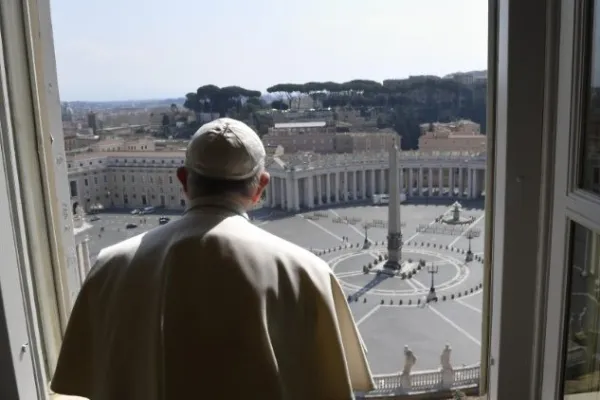
Vatican City, Aug 5, 2025 / 11:23 am (CNA).
White rose petals drifted from the gilded ceiling of St. Mary Major Basilica on Tuesday as Romans celebrated the 1,667th anniversary of a fourth-century Marian miracle that inspired the construction of the oldest Marian sanctuary in the West.
According to tradition, the miracle involved a miraculous snowfall in Rome on Aug. 5 in the year 358. The Virgin Mary appeared to both a wealthy Roman nobleman named John and to Pope Liberius (352–366) in a dream foretelling the August snow and asking for a church to be built in her honor on the site of the snowfall.

The basilica was rebuilt by Pope Sixtus III (432–440) after the Council of Ephesus in 431 declared Mary to be the mother of God.
Lithuanian Cardinal Rolandas Makrickas, 53, archpriest of the Basilica of St. Mary Major, celebrated the Mass on Aug. 5 to mark the anniversary of the dedication of the Marian basilica.
Appointed to reorganize the basilica’s administration in 2023 as a coadjutor archpriest, Makrickas officially succeeded Cardinal Stanislaw Rylko, 80, last month.

As the choir sang the “Gloria” during the liturgy, a gentle cascade of white rose petals fell from the basilica’s ceiling, evoking “the miracle of the snow” said to have taken place nearly 17 centuries ago.
In his homily, the cardinal noted that the snowfall “can be understood as a symbol of grace.”

“It can only be received as a gift,” he said. “Grace also arouses admiration and amazement.”
Makrickas noted that Pope Francis participated in last year’s commemoration on Aug. 5. “Pope Francis, who rests in this basilica to be watched over, inspired, and comforted [by] our heavenly mother, Salus Populi Romani, deeply experienced this maternal guidance of Mary,” he said, referring to the revered Marian icon housed in the basilica.

“Like him, thousands of pilgrims, in this jubilee year, walk through the Holy Door of this Marian sanctuary to ask for God’s grace to be able, with renewed faith and a burning heart like the snow, to be witnesses of the great works of God in the world,” he added.
Among the four major papal basilicas in Rome, St. Mary Major is the only one that maintained its original structure. Mosaics dating back to the fifth century can be seen in the central nave of the basilica, which also houses the relic of the Holy Crib from the birth of Christ.

“Dear brothers and sisters, crossing the Holy Door of this basilica means entrusting one’s journey of life and faith to the maternal protection of Mary,” Makrickas said. “And to be inspired by hope is to open oneself to this hope that does not disappoint.”
If you value the news and views Catholic World Report provides, please consider donating to support our efforts. Your contribution will help us continue to make CWR available to all readers worldwide for free, without a subscription. Thank you for your generosity!
Click here for more information on donating to CWR. Click here to sign up for our newsletter.










Leave a Reply